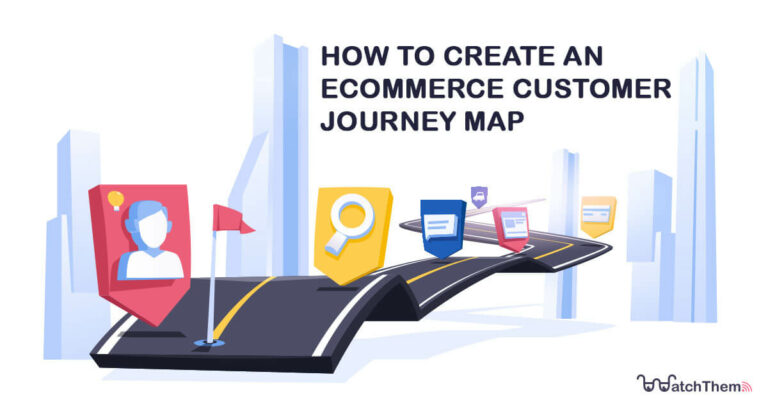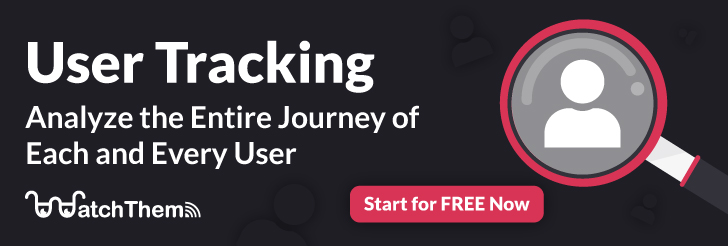Page Contents
eCommerce markets have been growing nonstop, especially during the COVID-19 pandemic. So no one should underestimate the power of eCommerce marketing.
If you have an online store or are thinking about opening one, you need to learn about eCommerce customer journey mapping.
Understanding your customer’s mindset is one of the most important parts of maintaining any eCommerce business. Discovering your customers’ motivations and pain points can positively affect your business. The most effective way to do so is by building an eCommerce customer journey map.
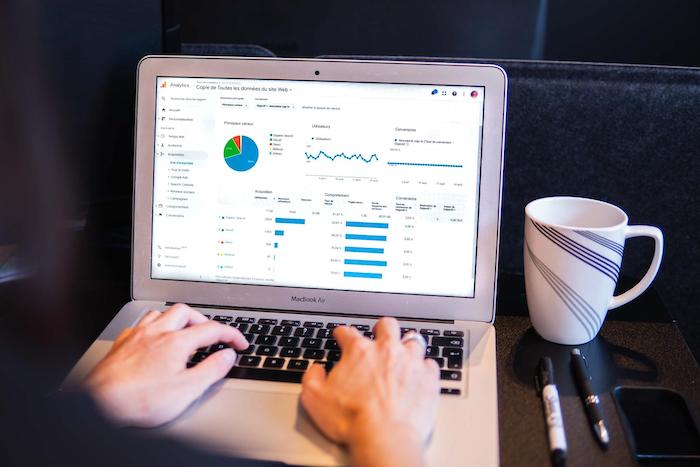

Understanding your customers is essential in customer journey mapping. Looking for a tool to help you understand your customers better? Sign up to WatchThemLive and get started.
What Is an eCommerce Customer Journey Map and Why Should You Use It?
Customer journey mapping visualizes your customers’ interactions with your brand or product and gives you insight into the pain points that might be preventing them from purchasing your goods. Customer journey mapping guarantees that customers’ issues are addressed to have a better experience.
The eCommerce customer journey map is an amazing tool that helps you build a shared understanding between customers and your brand. So what makes it different from other UX maps? Keep reading to find out customer journey maps’ advantages.
eCommerce Customer Journey Map Advantages
Here, we’re going to discuss why you should use an eCommerce customer journey map:


1. You Can Understand How Customers Interact With the Brand
Customer journey maps enable you to have a solid framework of how your customers interact with your brand. And this framework ensures that you and the whole team members have access to the same data.
2. It Keeps Track of the Various Stages of the Customer’s Journey
You can learn about the numerous steps a customer goes through before making a final purchase by attentively recording how they communicate with you. You may utilize this information to enhance your customer interactions, providing them the push they need to buy from you.
3. It Can Help You Find the Customers’ Motivation for Purchasing Your Product
One of the best points about customer journey mapping is finding out what motivates your customers to purchase from you.
Once you understand customer motives, you can supply your store with products they prefer and remove pain points, resulting in more customers and sales.
4. Addressing Pain Points Helps You Convert Potential Customers
Customers might face difficulties in their journey that make them leave your website without purchasing anything. They might leave either because gaining information about your products is hard or reaching your support team is time-consuming. In any case, the customer journey mapping process keeps track of the pain points for you to resolve.


How to Create an ecommerce Customer Journey Map?
To create an eCommerce customer journey map, you can follow these steps:
1. Gather Data About Your Customers
Gathering information about your customers is the first step in customer journey mapping. Put yourself in the customer’s shoes; this will help you understand your audience. There are some sources to gather your data from; some of them are listed below:
• Social Media
Social Social media is a great source for gathering information. However, it’s crucial to compare the data you collect to your website’s info to see if there are any similarities.
• Website
Website visitor tracking provides information about what kind of customers are interested in your brand, where they are from, their gender, age, interests, etc. A vital stage in data collection is analyzing your website’s user flow or user experience. This gives you important information about the pages and sections of your website that your customers visit. It helps you understand what makes them stay or leave. You can also discover pain points to solve them.
If you are looking for a tool to track website visitors, WatchThemLive’s heatmaps and video recordings are for you! Heatmaps enable you to see where customers had more interaction with your website. And by using video recordings, you will be able to watch every mover of your visitors. So sign up now and see what’s next!
• Customer-Facing Team
Customer journey mapping requires talking to customer-facing teams and gaining feedback on your target audience’s feelings about your brand. After collecting the data you need, you may still have some questions you can answer through surveys. Asking your customers to take part in surveys and customer interviews is how to answer those questions.
2. Create a Persona For Your Audience Based on the Information You’ve Gathered, and Make Sure Your Goals Are Clear
You have gathered all the data you needed. Now is the time to divide your customers into groups based on demographics, interests, characteristics, etc. Then, analyze the data to find commonalities such as demography, geography, behavior, and the pain points your customers have in common.
These similarities will help create an audience persona and establish clear objectives for the issues you must address.
3. Make a List of All of the Touchpoints
Customers’ experiences and interactions with your brand are visually represented in an eCommerce customer journey map, and each journey is unique to business processes with different touchpoints. Therefore, it’s crucial to track how your consumers contact and interact with you.
Analyzing your website’s initial touchpoints isn’t enough; you also need to collect data from various sources (social media channels, targeted ads, marketing content) and track how customers explore your site. By gathering this data, you’ll be able to see how accessible you are and whether there’s room for improvement. Providing the correct information to your customer at the right moment is essential for converting them.
4. Analyze the Various Phases of the Customer Journey
The customer journey includes four phases. Analyzing them is very important to map your customer’s journey with your website. You should design a template that encompasses all of these phases. That’s because you need to understand all major issues and touchpoints that the potential customer might go through and continuously refine them to map your customer journey. Here we will explain each phase and some of the questions you should ask to map the journey for each of them.
Related Article: Customer Journey Analytics: A Simple but Complete Guide
1. Awareness Phase
It all begins when a potential customer comes across your brand and attempts to figure out what you have to offer. Here, they already know their pain points and are looking for solutions. For example, your customers might be starting a new business or having problems with their current business or they might have a physical store and want to develop an online system for their shop. To help them, you have to ask many important questions:
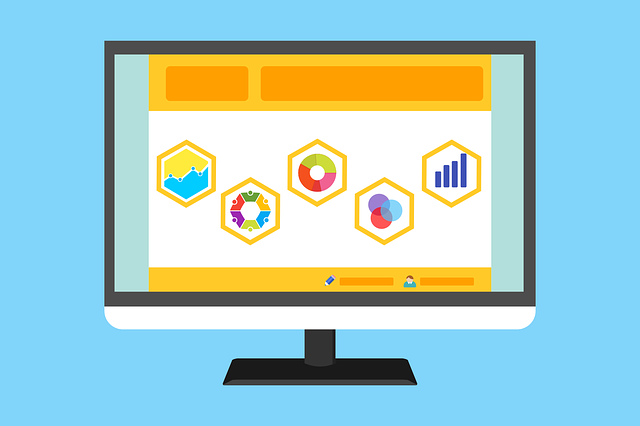

1. Why Is the Customer Looking for a Solution from You?
First, you need to find out the major challenge your customer faced without your product. You need to find out what made them look for a solution in the first place. Putting together a list of the primary causes can help you identify customers’ challenges.
2. How Did They Find out About You?
Find the source where they learned about you. Discover if it was a recommendation from someone or they found you through an internet search. They might have even found your product via social media and realized it was a good solution for their problem.
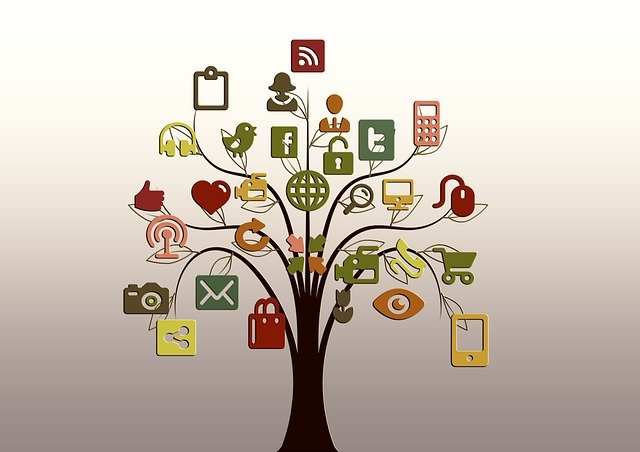

3. How Did They Reach You Once They Found Out About You?
What did they do when they became aware of your existence? They might have reached you through social media or left their information on your site. You need to find all the touchpoints at this stage.
4. What Kind of Information Are They Looking For?
What does the customer want to know about you or your business? Did they read a whitepaper, or were they just curious about an article you wrote? For this purpose, you can also track your website to see what pages they visit.
5. What Questions Do They Have?
Your customer might still have some questions and uncertainty before considering your brand. Make a list of these questions and answer them on your website.
2. Consideration Phase
Now, you have recognized your customer mindset and answered their questions. In this phase, your customer knows about you and your solutions to their problem. They’re comparing you with your rivals to decide whether they should choose you over them or not and you have to show them why you are the best in the market. The customer identified the main problem that you will solve for them. Questions you should consider in this phase are:
1. What Makes People Want to Learn More About You?
Find the customer’s motives that make them want to know about you. For example, what makes them excited about your product?
2. What Are Your Customers’ Touchpoints?
Learn which part of your website they clicked on the most and which pages they visited to learn more about you. For example, they might click on your home page, contact us page, blog articles, etc. By understanding these touchpoints, you can ensure that you give them all the information they need.
Looking for a tool to track your customers’ interactions with your website? Sign up to WatchThemLive and get started.
3. What May Be Their Current Pain Points?
Learn if they like your products more or your rivals’. By understanding their pain points, you can understand why they choose your opponents over you.
3. Purchase Phase
After you gain all the information about your customers’ mindset, you should work on the purchase phase. At this stage, your customers have weighed all of the options and have decided to purchase your goods. It would be excellent if you mapped their journey to guarantee that they have a pleasant shopping experience with you. Questions you should consider in this phase are:
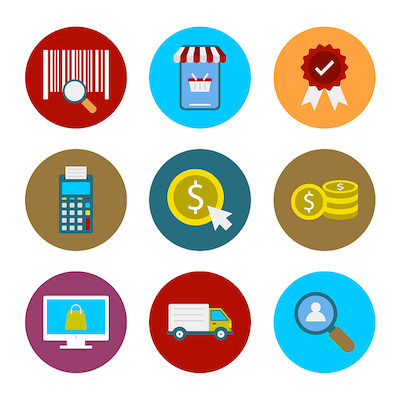

1. What Led Them to Purchase the Item?
Which factors drew the customers to you? What made them choose you over the other options? What changes the game to make a potential consumer choose you? Understanding their motivation can help you improve the effectiveness of your message even more.
2. What Steps Did They Take to Complete the Purchase?
People go through a process when they buy something on your website. Make a list of the steps involved in making a purchase. The customer has probably entered their credit card information, shipping address, and billing address. Did they try to save money by using a coupon? Was the transaction a success? Did they get an order confirmation email after they made the purchase? Did they open the email?
3. What Are Their Thoughts on the Purchase?
Is the customer sure of their choice? Are they satisfied or disappointed? You can improve their experience by understanding their feelings.
4. Did They Face Any Challenges While Checking Out?
Was the customer’s purchasing experience simple? Understanding the difficulties can help in refining the process.
5. What Questions Do They Have?
Your customer, like everyone else, will have several questions after making a purchase. For example, they’d like to know about additional expenses, what they’ll get, whether the purchase is refundable or exchangeable, and so on. Having a repository of such questions can assist you in dealing with them and responding to them in the future.
4. Retention Phase
The final phase in the customer journey mapping process is to ensure that your customers are satisfied. Providing excellent and quick solutions to their difficulties will help them remember you and become loyal to your brand.
During the retention phase, you give your clients more reasons to adore you so that they keep buying from you and become lifelong customers. Questions you should consider in this phase are:
1. Are They Enticed to Make Another Purchase from You?
What motivates your customer to keep buying from you? To reduce churn, you should rekindle that motivation. For example, did you send them a follow-up email that persuaded them to return? Were they enticed to purchase more due to the special offers or coupons you sent? Are their issues resolved to encourage them to continue to buy from you?


2. What Did They Do Following the First Purchase?
Did they continue to use your goods, or were they dissatisfied? Was it such a memorable experience that they left a review? Did they contact you several times because they were confused, or did everything go smoothly? Understanding what your customers do after they make their initial purchase might help you improve their experience.
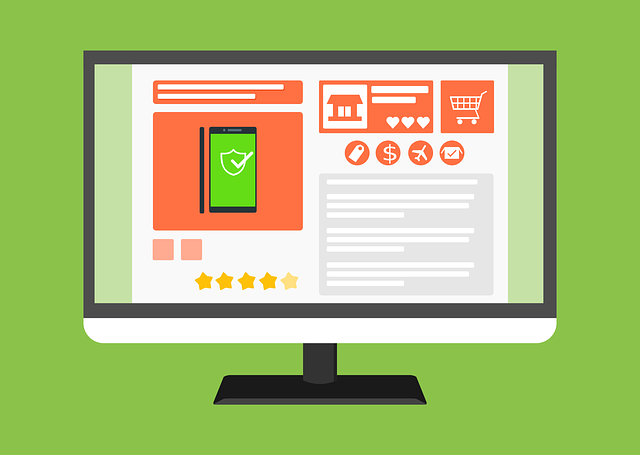

3. Have They Created Any New Touchpoints with Your Brand?
After a customer makes a purchase, you should keep track of how they interact with your business. To deliver exceptional customer service in the long run, you must first identify every touchpoint and communication channel they use, such as emails, chatbots, support calls, surveys, feedback forms, etc.


4. What Was Their Overall Impression of the Situation?
Even if the initial customer experience was fantastic, the overall experience is what matters the most. Therefore, to determine the success of your product, you must first understand your customers’ whole experience with your brand.
5. Consider Yourself a Customer and Take the Journey Yourself
If you don’t take the journey yourself, the eCommerce customer journey map will be incomplete. Analyzing the mapping process is vital, but taking the journey yourself completes the process. Follow each of your personas through the four stages of the process, adding any new information you discover along the way.
6. Optimize Your eCommerce Customer Journey Map
Now that you have a complete eCommerce customer journey map, including your own experience. Ensure your official channels (websites/social media/marketing materials/ads) are your customers’ first touchpoints, so they have the correct information about you. To ensure your customers have a hassle-free experience with your business, address the concerns during the customer journey mapping process.
Tools and Software You Can Use to Create Customer Journey Map
Now that you have all the information, you need to build a customer journey map. But how? Here are some tools that can help you visualize your eCommerce customer journey map:
1. WatchThemLive
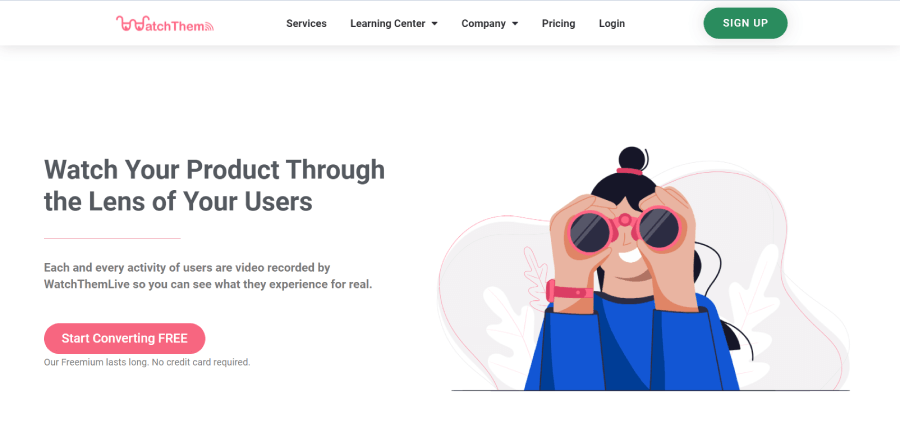

WatchThemLive’s services include a user behavior tracking tool that provides valuable information about your website visitors. This data is the most effective technique for developing a customer journey map and identifying your website’s weak and strong points. We accomplish this through two primary services:
Session Replay
With session replay, you can observe the customer journey from beginning to end and identify areas where they may struggle or fail.
Heat Mapping
You can determine where the customer’s interest is focused on your website with heat mapping in hand.
Sign up to WatchThemLive for FREE and get started.
2. Microsoft Visio
Microsoft Visio is a powerful diagramming tool that can help build a customer journey map. You can draw any kind of diagram. These include floor plans, process floor diagrams, 3D maps, flow charts, etc.
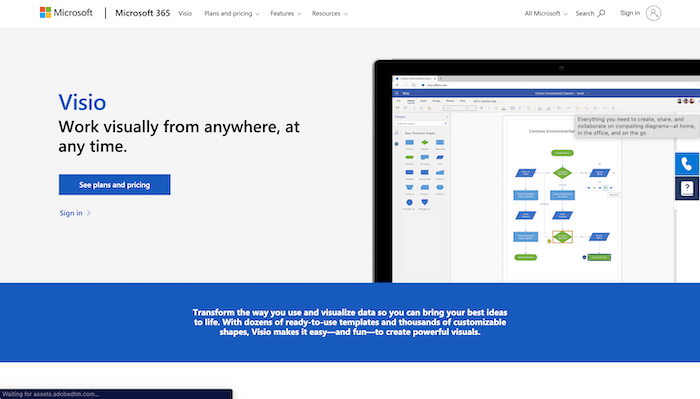

3. LucidChart
LucidChart is an innovative diagramming program that turns seeing into doing and can help you with your mapping process. You can style shapes, create diagrams, expand your canvas, and more with this tool.
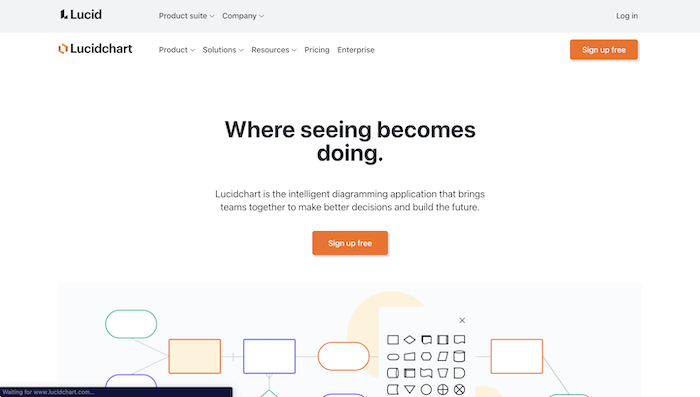

Conclusion
This article talked about what an eCommerce journey map is, its characteristics, and why you should use it. After that, we gave you tips on how you can make one, the different phases it includes, and the questions you might need to answer. In the end, we introduced some tools that you can use to build a successful eCommerce customer journey map.
Among these tools, WatchThemLive is the best tool for user tracking as it provides you with session replays and heatmaps. Sign up for FREE and see for yourself.

